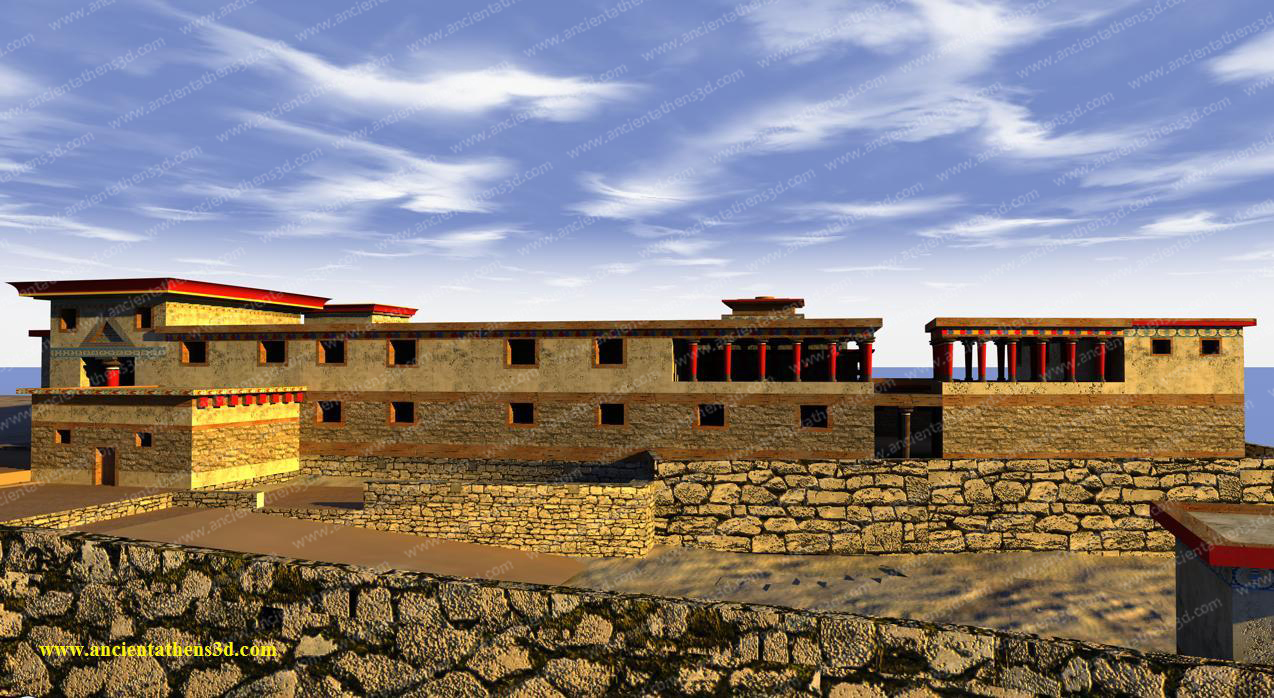The wall, also known as Pelasgian (or Pelargic), is still visible near the Propylaea, while many parts of it are kept buried all around the Acropolis. It was the main defense until the end of the Archaic period. It had three entrances: north, south and west. The last one, where the Propylaea stand today, was protected by another wall that had nine gates, the so-called enneápylon ("nine-gate"), which, as Thucydides mentions, still existed when the Persians entered Athens in 480 BC.
Few traces have been left of the Mycenaean palace that existed at the top of the Acropolis. It is known that it was located in the area of the much later Erechtheion. The palace was probably destroyed by natural causes (fire or earthquake) in the 10th century BC, since according to tradition the Dorian invaders did not manage to capture Athens (this is the basis of the Athenians' claim, as Ionians, that they were indigenous). The relics found by the Athenians of the archaic period in the area where the palace was, were probably rich. In combination with the tombs that were confirmed and excavated in modern times, the legend was created for the first king of the city, Kekrops, who has since been worshiped along with other deities there, turning it into the most sacred place inf Athens.
After the collapse of the Mycenaean civilization and generally the collapse of the Bronze Age civilizations in the eastern Mediterranean (1200-1150 BC), Athens, although it does not seem to have been destroyed, nevertheless fell into decline. Several inhabitants of the destroyed Mycenaean centers settled in Athens. Little is known about the "dark ages" that followed. From the 9th century BC. however, Athens seems to recover and develops trade.








